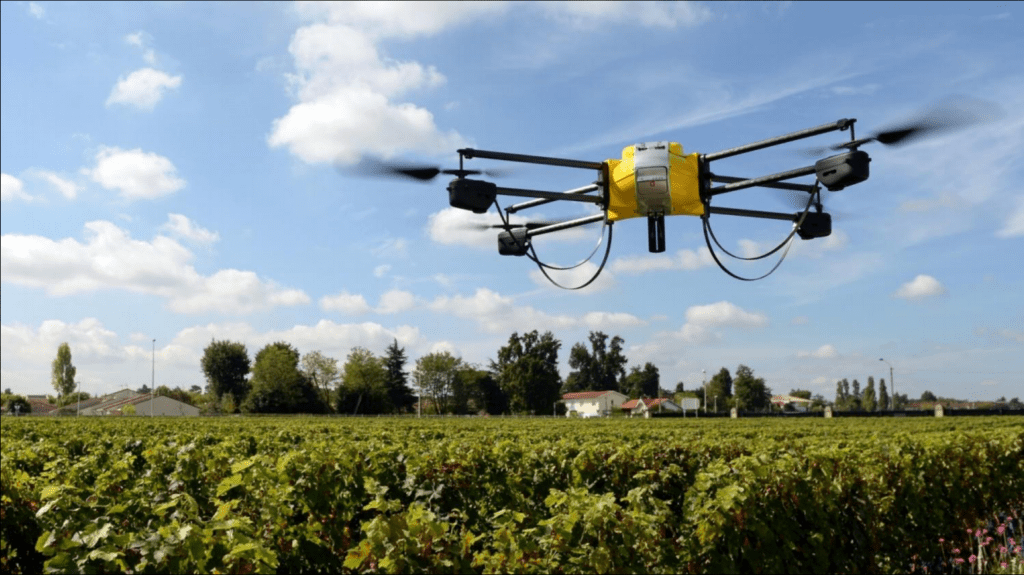
The FAA formed a committee last year to develop recommendations on standard regulations for drone operation in the U.S. and has now published a report summarizing their findings. (Photo: Commercial Drone Alliance)
The Federal Aviation Administration’s Beyond Visual Line of Sight (BVLOS) Aviation Rulemaking Committee published a report last week with recommendations on standard regulations and guidance for drone operators. The BVLOS Aviation Rulemaking Committee, or ARC, was established nine months ago to analyze the current regulatory framework for uncrewed aircraft systems (UAS) and subsequently determine appropriate criteria to enable safe, scalable, and environmentally friendly UAS BVLOS operations in the U.S.
At the beginning of 2021, the FAA made its first approval of uncrewed BVLOS drone operations without human operators onsite. This was granted to American Robotics, a company that develops fully-automated commercial drone systems, to utilize their drone technology called the Scout System featuring advanced detect-and-avoid (DAA) capabilities. Prior to that approval, other waivers from the FAA had only allowed for flight along paths while monitored by observers. In June 2021, the FAA announced an amendment to recreational drone operations: from that point on, operators would be required to complete a safety test in order to fly drones in the U.S. Known as the Recreational Unmanned Aircraft Systems Safety Test (TRUST), the assessment is free to take, and it is available online.
The committee researching UAS BVLOS regulations found that the current aviation regulatory framework could not accommodate existing operations of unmanned aircraft, “and certainly not at the levels anticipated as the industry grows,” according to their report. While listing technical mitigations and operating recommendations, the report also prioritized a focus in the UAS industry on the needs of communities. This includes consideration of benefits to underserved areas, use of clean energy, and positive economic, environmental, and equity benefits for the public.
The BVLOS ARC first recommends setting a consistent acceptable level of risk for all types of UAS operations in order to give operators flexibility in adhering to the acceptable level of risk using various methods. Another recommendation is to make amendments to the right-of-way rules in low-altitude areas in order to accommodate uncrewed aircraft operations. These amendments included giving UAS the right of way in shielded areas (within 100 feet of a structure), giving UAS the right of way over any crewed aircraft that do not have Automatic Dependent Surveillance-Broadcast (ADS-B) or Traffic Awareness Beacon Systems (TABS), and allowing right of way for crewed aircraft that are equipped with ADS-B or TABS and broadcasting their position.
The report from the FAA’s UAS-BVLOS committee explains that the Part 107 rule of Title 14 of the Code of Federal Regulations, issued in 2016, was an important first step to normalize and facilitate uncrewed aircraft operations. However, the ARC encourages the creation of a new Part 107, Remote Pilot Certificate with Small UAS Rating that would include Extended Visual Line of Sight (EVLOS) and shielded UAS operations to ensure that operators are knowledgeable on these topics. The ARC also encourages the FAA to establish a new BVLOS Rule for the UAS qualification process. The last recommendation highlighted in the report is that the FAA should adopt a “non-mandatory regulatory scheme for third party services to be used in support of UAS BVLOS operations.”
In writing these recommendations, the UAS-BVLOS ARC incorporated findings from empirical studies and data from reliable sources such as the International Civil Aviation Organization (ICAO) and the National Transportation Safety Board (NTSB). Members of the committee represented diverse interests and viewpoints and were assigned to various groups to collaborate in developing recommendations for BVLOS operations. The first working group, which focused on community interests in safety, the environment, and security, included representatives from Airbus, AT&T, the Consumer Technology Association (CTA), the General Aviation Manufacturers Association (GAMA), and the Helicopter Association International (HAI), among many others.

“Unlocking BLVOS will have a tremendous impact on the world, opening up opportunities only dreamed about in science fiction.” – John Vernon, CTO of DroneUp (Photo: DroneUp)
The second working group within the ARC examined market drivers and incorporated perspectives from organizations and enterprises such as the Association for Unmanned Vehicle Systems International (AUVSI), the Commercial Drone Alliance, DroneUp, Echodyne, FedEx, NUAIR Test Site, and T-Mobile, to name a few. Lastly, the third working group focused on regulatory concerns and invited input from representatives of the Flight Safety Foundation, National Air Traffic Controllers Association (NATCA), One Sky, and ASTM International among others.
John Vernon, Chief Technology Officer (CTO) of DroneUp, represented the company as a participant in the UAS-BVLOS ARC and shared his thoughts on the committee’s findings in a statement released by DroneUp. “Unlocking BLVOS will have a tremendous impact on the world, opening up opportunities only dreamed about in science fiction,” he stated. “This report’s feedback and common-sense proposals represent the best from the technology, aviation, municipal, and societal leaders and provide a solid list of recommendations to rule-makers. We are excited to see how these recommendations will shape regulations that will propel this industry forward by providing a clear pathway to BVLOS.” He explained that DroneUp has focused on delivering solutions within current regulatory constraints, while others in the industry have claimed the lack of regulatory options as a barrier to their success. “We are immensely grateful to have had the opportunity to help shape the future of UAS for BLVOS operations,” Vernon remarked.